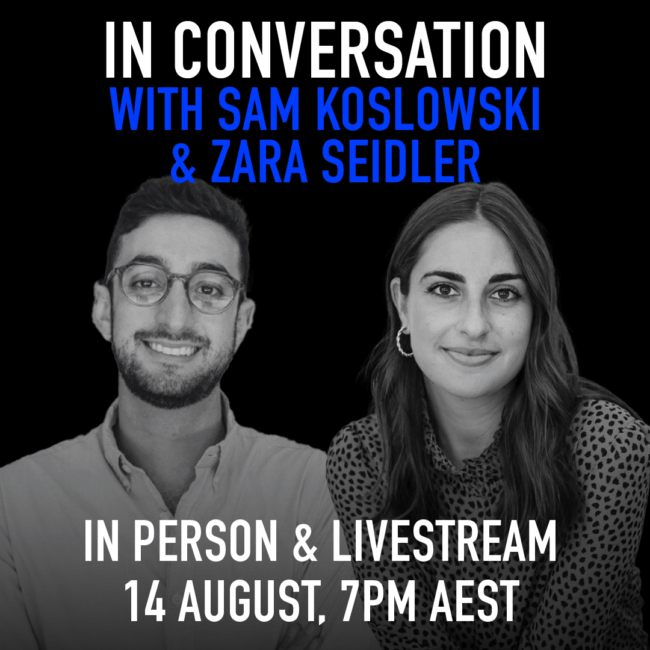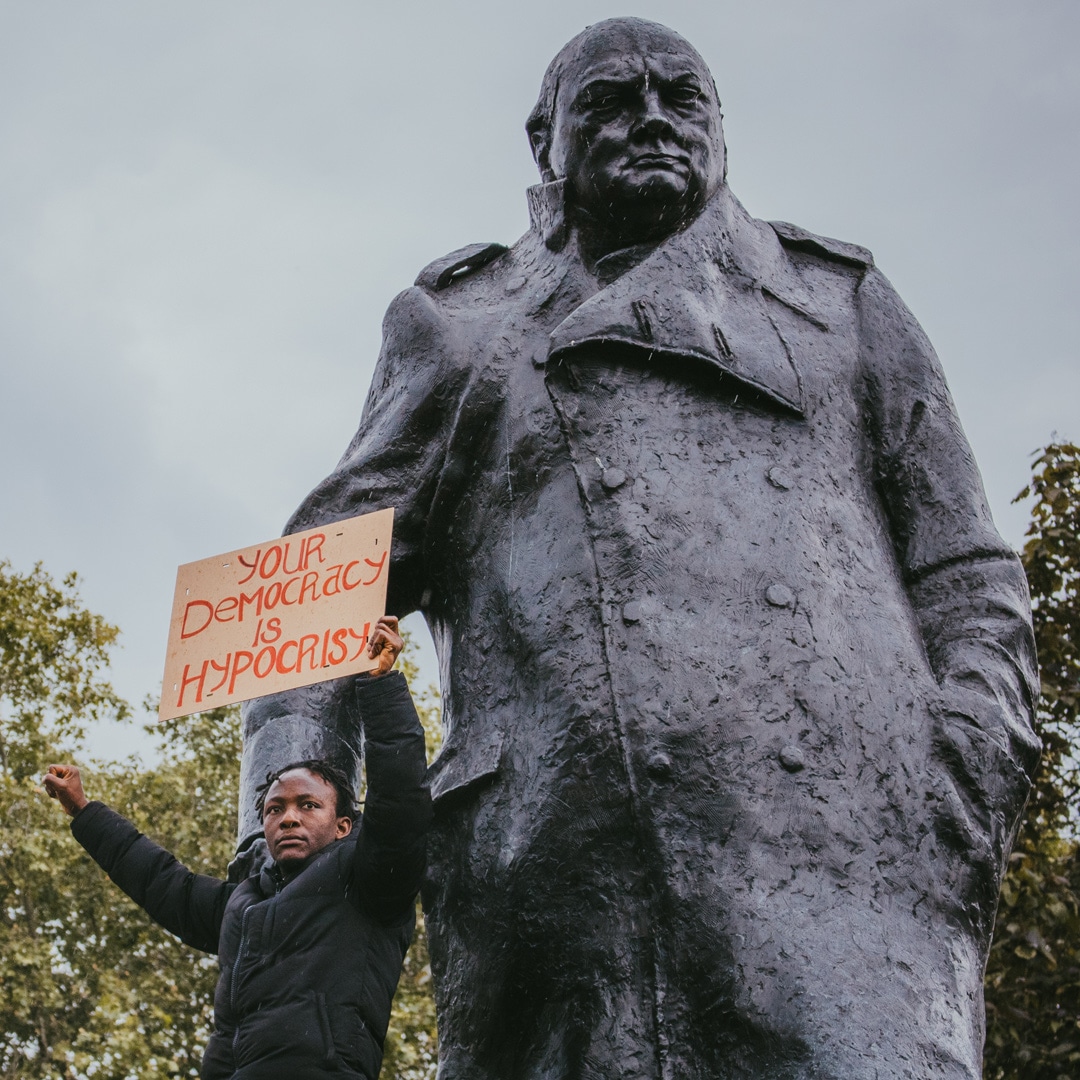
What are we afraid of? Horror movies and our collective fears
Opinion + AnalysisSociety + Culture
BY Joseph Earp 20 AUG 2024
In 1968, the dead walked the Earth. George A. Romero’s The Night of The Living Dead, shot on a shoestring budget in black and white and film stock, was the movie that popularised zombies as we now know them.
In the film, a ragtag group of survivors must band together, as corpses rise from the grave in a desperate search for human flesh.
Night of the Living Dead was a smash hit. It made more than 250 times its budget, becoming a cultural talking point, and scarring an entire generation. Taken on face value, its success is surprising. The film is unremittingly bleak, even for a horror movie – aside from the blood and guts, it also ends with one of cinema’s great downers, as the film’s hero, Ben (Duane Jones), is murdered not by the zombies, but instead an armed posse dispatched to kill the zombies, who confuse him for a reanimated corpse.
Given Ben is African-American, the film’s final image – his dead body set alight, burning to ash on top of a pile of zombie corpses – had powerful, painful symbolism for audiences in the late sixties. It was a time of huge social upheaval; of struggle, pain, and change. America was still in the midst of the Vietnam war, and the Civil Rights movement was continuing to gather steam.
Indeed, that collective social suffering is precisely the means of explaining Night of the Living Dead’s great success. Mired in images of real-life suffering, beamed into their homes via their TV sets, American audiences flocked to see a film that gave a voice to the feeling of the times – its ambient horror. To borrow a quote from horror director Wes Craven, Night of the Living Dead didn’t “create” fear – it released it.
Naming the unnamable
Horror’s persistent success – slashers almost always make money, and are a go-to for indie directors precisely because they’re almost guaranteed to make a financial return – speaks to the genre’s ability to address the unnamed. Each generation has its trauma, and each generation has a horror film that speaks to that trauma.
Alfred Hitchcock’s Psycho, released in 1960, was a reaction to a spate of serial murders – chiefly the killings committed by Ed Gein. Rosemary’s Baby, released the same year as Night of the Living Dead, bottled the collective anxiety that came from modern urbanisation: set in a sprawling apartment block, it posits that you can never truly know your neighbours. Carrie channeled first wave feminism, and the oppression conducted by both men and the church; Clive Barker’s Hellraiser explored queerness and kink, and the violent reaction to it; Hostel and Saw, the forerunners of the “torture porn” movement, were birthed by images of violence released out of Abu Ghraib; and Get Out compressed years of racist oppression into one shocking tale.
In this way, horror films tap into what philosopher and psychologist Carl Jung referred to as the “collective unconsciousness”. Jung believed that we all have both personal unconsciousness, and an unconsciousness shared by all. This deeper, shared unconsciousness is populated by “instincts”, “primal fears”, and “archetypes.” These archetypes directly tie us back to our ancestors – they are as old as human beings are. They are core figures, images, and stories, that, given they are located deep inside us, are frequently “strange” and disturbing. Jung gave these archetypes names, from “eternity” to “the profane”.
Horror draws on these archetypes. In fact, given how common archetypes are – we cannot help, Jung thought, coming back to them – sometimes, these archetypes can be described as “cliches.” Just as the collective unconsciousness keeps returning to specific images and figures, so too does horror have its tropes: the masked murderer; the demon child; the haunted house; the animal that appears as a harbinger of doom.
This is why horror movies tap us in a deep, powerful way. They apply images and stories to things that live deep inside us; that are innate. Indeed, the philosopher William James thought that fear was key to the unconscious – he argued that if you dropped an Eskimo into the African savannah, they would know to be afraid of a lion, even if they had never encountered one before. Whether we like it or not, terror lives somewhere deep inside us; an unavoidable vein of anxiety, running through the human condition. By engaging with that, horror movies hit us on a primal level – and bring us closer to each other.
The release of fear
This releasing quality of horror films has been proven to have personally therapeutic benefits. Horror movies allow us to confront our fears directly; to expose ourselves to them. But more than that, they allow us to do so in a controlled, calm setting.
When we’re terrified by a horror movie, we’re not terrified in the same way we would be if we were literally in the situation outlined. Our brains know, on some level, that we are safe; protected; sitting at home, or in a movie theatre. A recent study showed that horror movies can provide “stress release, managing real-life fears, and gradually reducing the impact of stressors through exposure to danger and fear in a controlled environment.”
But horror movies don’t just help individuals expose themselves to fear. Their hugely beneficial ethical dimension is their ability to help societies to understand their fears.
We cannot solve or change something that we cannot name. Without proper language – without images – we cannot hope to confront the sick or ailing parts of our society. Horror movies funnel collective anxieties into precise ones. And with their image as a kind of vocabulary, we can start talking about these issues, and in that way, move to change them.
Indeed, stories of horror and evil have historically served as a way of forming and reinforcing moral judgement. We tell ourselves stories of what taboos look like when they are broken in order to remind ourselves of the importance of those taboos. Using these narratives, we can come together in order to decide what is permissible and what is not – the shock of anti-social, violent behaviour moving us towards a place of steadfast moral judgement. The horror movie only scares us because it shows us what we shouldn’t do, what we don’t want, what we, collectively, will work to avoid.
This quality of sharing is important. The success of a film like Get Out brought people together. It cut across class, gender and racial divides. In cinemas across the world, people sat in the dark, and discovered that they were afraid of the same thing as the person in the seat next to them. And it is from that base of solidarity – provided by cinematic nightmares, no less – that special things can happen.
Image: Get Out, Universal Pictures

Ethics in your inbox.
Get the latest inspiration, intelligence, events & more.
By signing up you agree to our privacy policy
You might be interested in…
Opinion + Analysis
Politics + Human Rights, Relationships, Society + Culture
The ethics of tearing down monuments
Opinion + Analysis
Business + Leadership, Health + Wellbeing, Society + Culture
Ethical concerns in sport: How to solve the crisis
Opinion + Analysis
Relationships, Society + Culture
Meet Eleanor, our new philosopher in residence
Opinion + Analysis
Society + Culture, Health + Wellbeing




